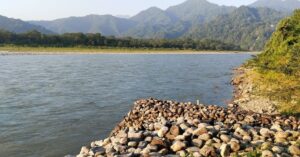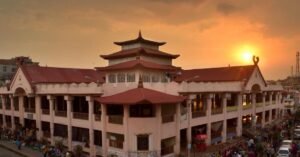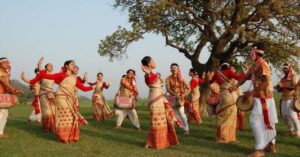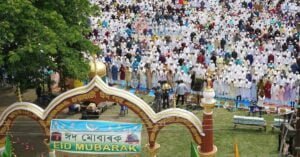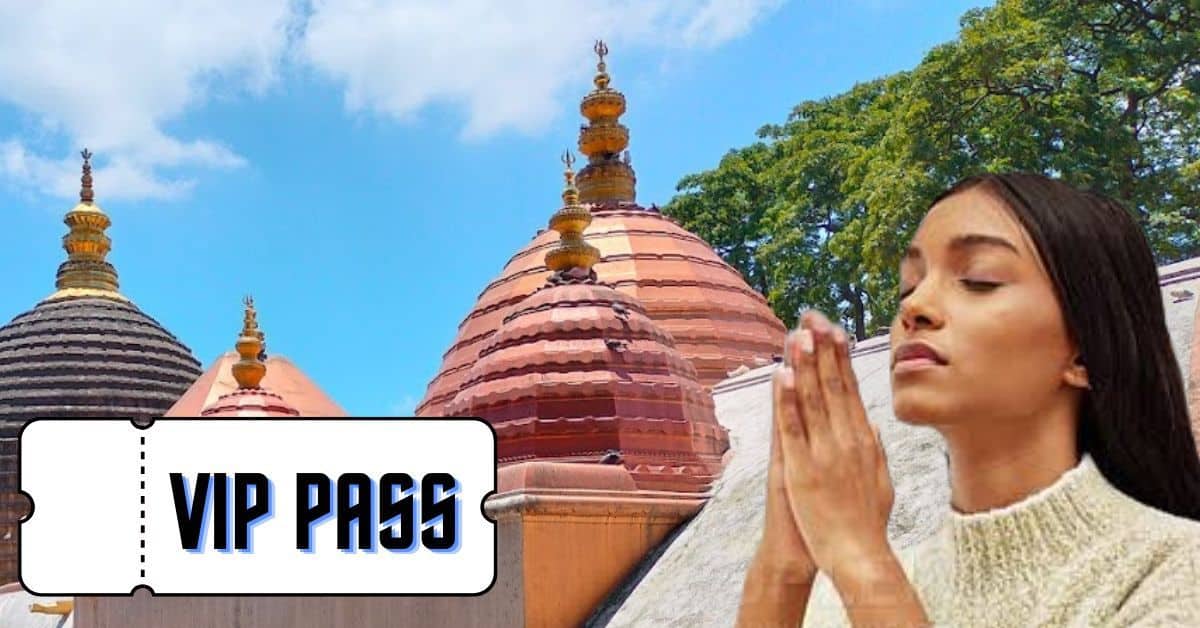The Pygmy Hog of Assam, is renowned for its diminutive size, making it the world’s smallest wild pig species. Scientifically identified as Porcula salvania and known as Nol Gahori or Takuri Borah in Assamese. Historically, it used to reside in a narrow strip of grasslands south of the Himalayan foothills, spanning Uttar Pradesh, Nepal, Bihar, North Bengal, and Assam. However, by 1993 it was reduced to a single population found only in a few pockets of the Manas National Park of Assam. The Pygmy Hogs belong to a distinctive genus with no close relatives. Resembling a Wild boar in some aspects, the Pygmy Hog is significantly smaller, with adult specimens measuring approximately 65 cm (25 inches) in length, 25 cm (10 inches) in height, and weighing around 8 to 9 kgs or less than 20 pounds. It is approximately 10 to 15 times less massive than a Wild Boar.
Cause of Pygmy Hog Becoming Critically Endangered
Pygmy Hogs survive in tall grasslands and feed on roots, tubers, wild-fruits, termites, earthworms and eggs found in the grasslands. With the extinction of tall, wet grasslands in the region, Pygmy Hogs suffered a massive habitat loss. Furthermore, humans and other animals hunted Pygmy Hogs for food. In addition to this, it is impossible to see Pygmy Hogs in their wild natural habitat, as they are very shy animals. They are well adapted to move fast through tall dense grasses with their streamlined bodies. So, till 1970s, Pygmy Hog of Assam were thought to be extinct.
Spotting of Pygmy Hog of Assam
As wildlife enthusiasts searched extensively for Pygmy Hog of Assam in Manas National Park, a small population of pygmy hogs were spotted in the Bansbari Range of Manas National Park 1996. As a result, Pygmy Hog Conservation Programme (PHCP) was started in 1996. Further, two males and two females were captured from Manas National Park for captive breeding.
PHCP selected other appropriate grasslands in Assam for reintroduction of the pygmy hog. One site, Orang National Park, located approximately 120 km southeast of Manas National Park, on the north riverside of the Brahmaputra was selected for it. The reintroduction of captive-bred hogs to the wild began in 2008. Over the next decade, 35 hogs (18M, 17F) were released in Sonai- Rupai Wildlife Sanctuary, 59 (26M, 33F) in Orang National Park, and 22 (11M, 11F) in Barnadi Wildlife Sanctuary. Further, PHCP has so far successfully bred and reintroduced 170 hogs in Manas National Park
Current Status of Pygmy Hog of Assam
The Pygmy Hog of Assam are currently restricted to a single viable population in the wild in Manas Tiger Reserve and couple of reintroduced populations in Sonai Rupai Wildlife Sanctuary and Orang National Park, all in North Eastern state of Assam. Although accurate numbers are not known, it is estimated that there may be only a few hundred, probably less than 300, Pygmy Hogs left in the wild. As of now, Pygmy Hog is also mentioned in the red list category of the IUCN and is categorized as ‘Critically Endangered,’ putting it among the most threatened of all mammals.
Can one see them in Manas National Park?
No, Pygmy Hogs are extremely shy animals and it is almost impossible to see them in the wild. Someone needs to be very lucky to spot one crossing a jungle track.
What are the main threats to their survival?
The main threats to survival of pygmy hog of Assam are loss and degradation of habitat due to human settlements, agricultural encroachments, flood control schemes, unsustainable livestock grazing, extensive grass burning and improper management. Some management practices, such as planting of trees in the grasslands and indiscriminate use of fire to create extensive damage to the habitats.
Necessity To Save Pygmy Hog of Assam and its Habitat
Due to their high sensitivity, Pygmy Hogs are more adversely affected by habitat loss compared to some other species. They cannot thrive in poor habitat conditions. Pygmy Hogs also serve as a critical “indicator species” for their ecosystem, offering insights into the overall habitat health. Protecting indicator species is crucial, as many native animals and plants may struggle to survive in a degraded environment. Furthermore, these wet grasslands play a vital role in sustaining the long-term ecological and economic well-being of the region. They act as a natural barrier against floods during the rainy season and help maintain high groundwater levels in the dry season, indirectly benefiting the farming communities residing in the surrounding areas
Pygmy Hog Conservation Programme (PHCP)
In 1996, the Pygmy Hog Conservation Programme (PHCP) was initiated, involving prominent contributors such as the Durrell Wildlife Conservation Trust, the IUCN/SSC Wild Pig Specialist Group, the Assam forest department, the Union Ministry of Environment and Forests, and Ecosystems-India, with Aaranyak acting as the delivery partner. Among its primary objectives, PHCP focuses on conserving pygmy hogs, a significant part of which involves captive breeding efforts. PHCP manages a captive population of approximately 50 pygmy hogs and has successfully reintroduced 60 individuals into the Sonai Rupai Wildlife Sanctuary and Orang National Park over a span of five years. Notably, the sole captive breeding center in Assam is situated near Guwahati, the capital city, specifically in Basistha. This center, pioneered by Dr. Goutam Narayan, boasts a quarantine facility and enclosures designed to suit the needs of Pygmy Hogs, marking it as a highly successful captivity program. Before their release into the wild, these hogs undergo training to enable them to thrive independently. This pre-release training takes place in Potasali, Nameri Tiger Reserve, allowing the hogs to adapt to a semi-wild environment free from human interference.
Pygmy Hog of Assam are highly delicate creatures, and their continued existence is intricately connected to the presence of the tall, damp grasslands in the area. These grasslands, in addition to being a highly endangered habitat in their own right, also play a vital role in the survival of several other endangered species.


